Glossary
- A
- Acronychal rising
- Altitude
- Analemma
- Angular velocity
- Anomaly
- Aphelion
- Apogee
- Astrolabe
- Astronomical diaries
- Azimuth
- C
- Celestial body
- Celestial coordinates
- Celestial equator
- Concentric-and-epicycle model
- Concentric-deferent-and-epicycle model
- Conjunction
- Cosmical setting
- Culmination
- E
- Eccenter model
- Eccentric-and-epicycle model
- Eccentric-and-epicycle model with equant
- Eccentric-circle model
- Eccentric-deferent-and-epicycle model
- Eccentricity
- Eclipse
- Ecliptic
- Ecliptic coordinates
- Ecliptic plane
- Elongation
- Ephemeris, ephemerides
- Epicycle
- Equant
- Equatorial coordinates
- Equinoctial hour
- Equinox
- Q
- Quadrant
Analemma: in Greek astronomy, the analemma is a mathematical method to project the orbit of a celestial body in the celestial sphere on a plane. It was used for the construction of sundials. Vitruvius (Arch. 9.7), Heron (Dioptra 25), Ptolemy (in a dedicated work now preserved only in a Latin version) and later medieval Arabic treatises are the main sources to reconstruct this method—which is still not fully understood by modern scholars.
Angular velocity: it describes the velocity of an object traveling along a circular path by measuring the change in time of the angle with the vertex at the center of the circular path. It is now measured mostly in radians per second, but it can also be expressed in degrees per unit time (second, days, etc.) or revolutions per unit time.
Anomaly: the non-uniform motion of celestial bodies. The Sun, the Moon and the planets all have anomalies. In particular, the Greeks noticed two anomalies in the motion of the planets:
- The speed of the planets traveling from west to east along the ecliptic is not constant but is minimum at the apogee and maximum at the perigee. This was called ‘first anomaly’ or ‘zodiac anomaly’ (as it was connected with the planet’s speed along the ecliptic or zodiac circle).
- The motion of the planets also varies in connection with the elongation of the planet from the Sun. This was called ‘second anomaly’ or ‘solar anomaly’.
Aphelion: the point in a celestial body’s orbit farthest from the Sun. It only applies to bodies that orbit the Sun.
Perihelion: the point in a celestial body’s orbit closest to the Sun. It only applies to objects that orbit the Sun.
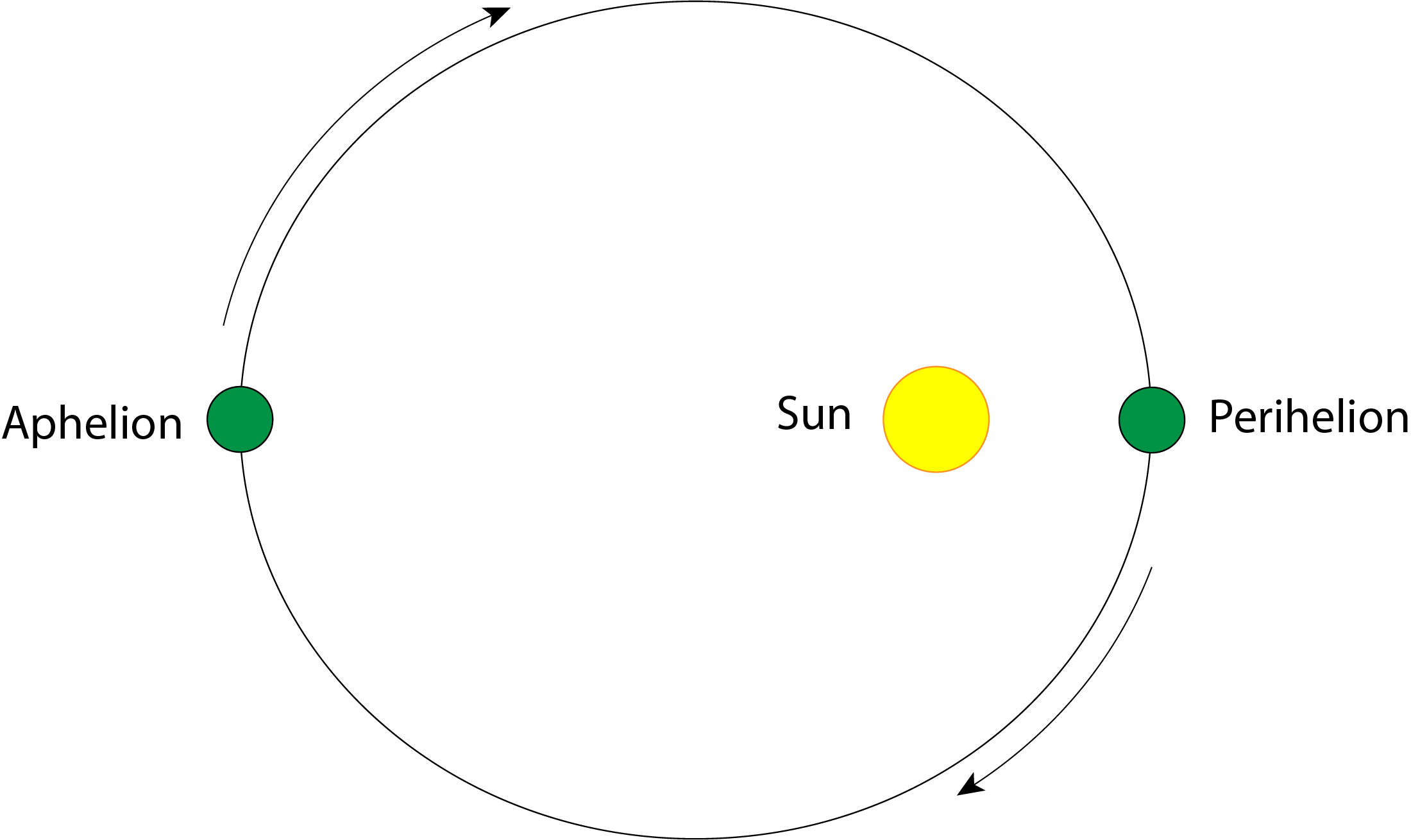
Apogee: the point in a celestial body’s orbit farthest from the Earth. It only applies to objects that orbit the Earth, such as the Moon.
Perigee: the point in a celestial body’s orbit closest to the Earth. It only applies to objects that orbit the Earth, such as the Moon.

Astrolabe (ἀστρολάβος = اسطرلاب): an astronomical instrument based on a projection of the celestial sphere. A Greek invention of late antiquity which Muslim astronomers adopted in the 8th century and subsequently elaborated, the instrument has many uses including astronomical timekeeping and deriving basic information for a horoscope. Muslim scholars wrote numerous treatises on the construction and use of the astrolabe and devised many additions to the standard instrument, including special markings for the times of Muslim prayer and curves for the azimuth (cf King, “Astrolabes, quadrants and calculating devices”).
Astronomical diaries: in Babylonian astronomy, texts containing records of observations of celestial and other phenomena. Preserved examples date from the early sixth to the mid first century BCE. Each diary typically covers 6 months and is divided in sections for each month; the astronomical phenomena recorded include the position of the planets and the moon with respect to certain reference stars, the synodic phenomena of the planets, lunar visibility phenomena, eclipses, and solstices and equinoxes. In addition, the diaries contain weather reports, measurements of river level, statements of the value of select commodities in the market, and brief accounts of important historical happenings.
Celestial body: a physical object that is observed in the universe. Common examples are planets, asteroids, comets, and stars. They do not include things such as nebulae or galaxies, since they are collections of multiple celestial bodies.
Celestial coordinates: similar to geographical coordinates, they are a spherical coordinate system used to uniquely identify the position of objects in the sky. There are three systems of celestial coordinates, and they have different reference points:

1. Equatorial coordinates: They are based on the celestial equator and use the right ascension and declination for position.
- Right ascension is measured along the celestial equator in hours, minutes, and seconds from the point where the Sun crosses the celestial equator from south to north, which is also the point of the vernal (spring) equinox (0° Aries).
- Declination is measured in degrees North or South of the celestial equator (sometimes referred to as the equinoctial circle).

2. Ecliptic coordinates: They are based on the ecliptic and use latitude and longitude.
- Longitude is measured along the ecliptic in degrees East or West from the vernal (spring) equinox (0° Aries).
- Latitude is measured in degrees North or South from the ecliptic.
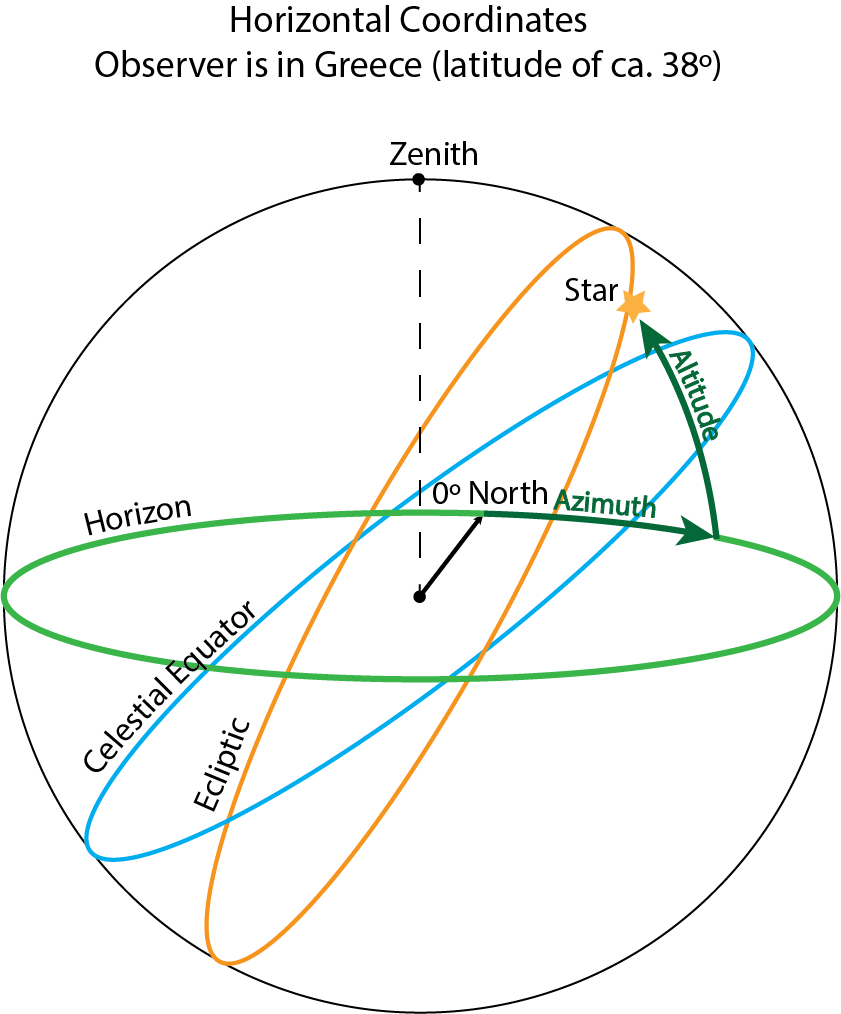
3. Horizontal coordinates: They are based on the local horizon and use elevation angle and the azimuth. Unlike the Ecliptic and Equatorial coordinate systems, this reference system depends on the observer’s location.
- Azimuth is measured in degrees from the North (0° N), increasing in the clockwise direction (i.e. eastward).
- Altitude is measured in degrees perpendicular to the horizon up to the local zenith.
Celestial equator: the projection of the Earth’s equator on the celestial sphere.
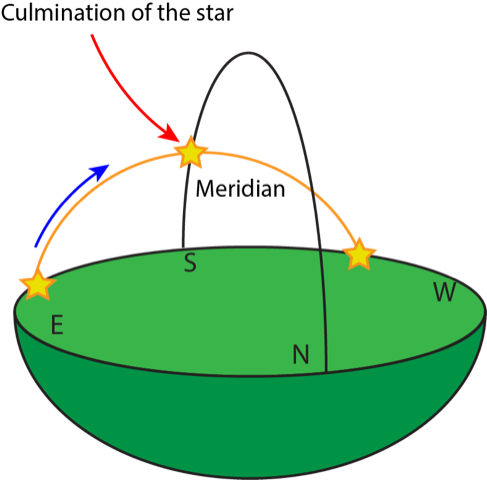
Culmination: the point in time when a fixed star on the celestial sphere crosses the local meridian (it is also called meridian transit).
Eclipse: it occurs when a celestial body is obscured (from the Greek ekleipsis, ‘disappearance’). This can happen either because the celestial body passes into the shadow of another one or because another celestial body passes between it and the viewer.
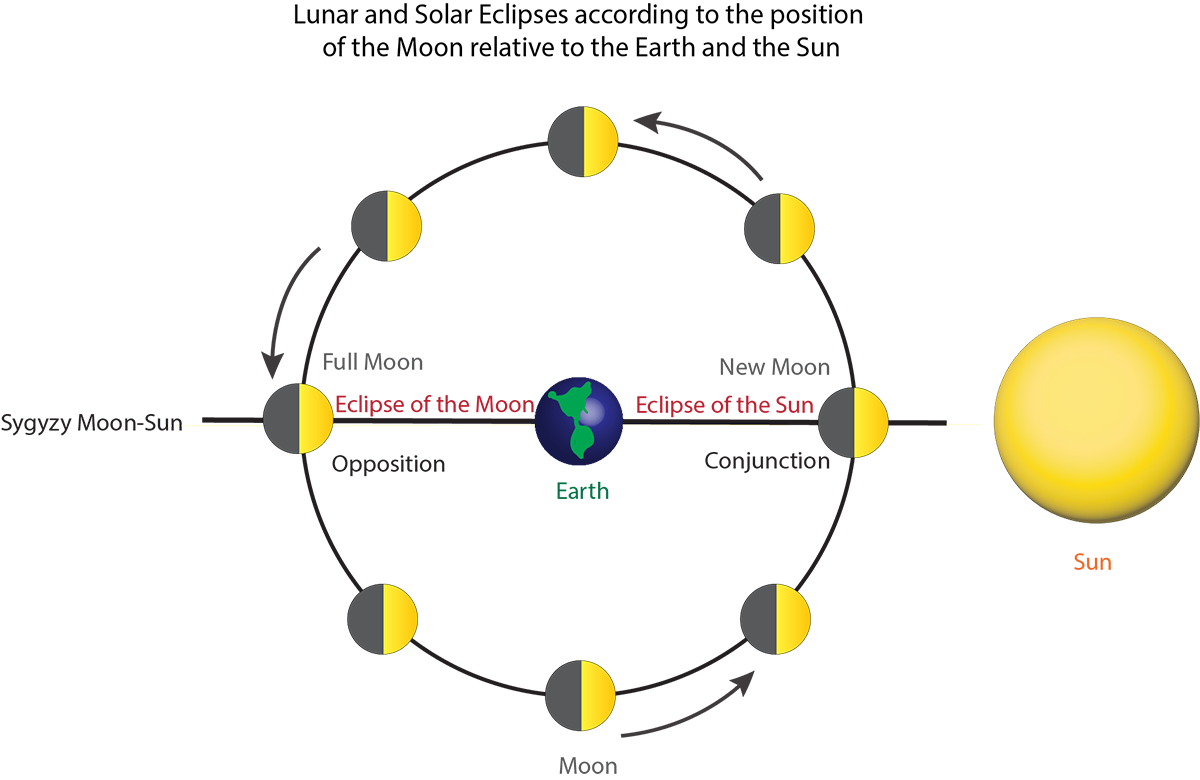
On the Earth, the most easily visible eclipses are the solar and lunar eclipses. Solar eclipses occur when the Moon blocks the radiation of the Sun by being in front of the Sun as seen from Earth; lunar eclipses occur when Moon enters the shadow of the Earth. Therefore, solar eclipses can only happen at the New Moon (i.e. when the Moon is in conjunction with the Sun) while Lunar eclipses can only occur at the Full Moon (i.e. when the Moon is in opposition to the Sun). However, eclipses do not occur every time that the Moon is in conjunction with, or in opposition to, the Sun. This is because the orbital plane of the Moon around the Earth is tilted by around 5° relative to the orbital plane of the Earth around the Sun (i.e. the ecliptic), so that the apparent paths of the Sun and the Moon can deviate from each other by up to 5° in ecliptic latitude. For this reason, eclipses can take place only at one of the two nodes, when the Sun and Moon are not only either in conjunction or in opposition, but also at the same ecliptic latitude of 0 degrees.

Ecliptic: the path along which the Sun moves in the sky over the year as seen from Earth. Over the course of a day, the Sun moves approximately a degree along the ecliptic. The ecliptic is a great circle in the sky, due to the intersection of the ecliptic plane with the celestial sphere.
Ecliptic plane: the plane in which the Earth orbits the Sun. Its intersection with the celestial sphere generates the ecliptic.
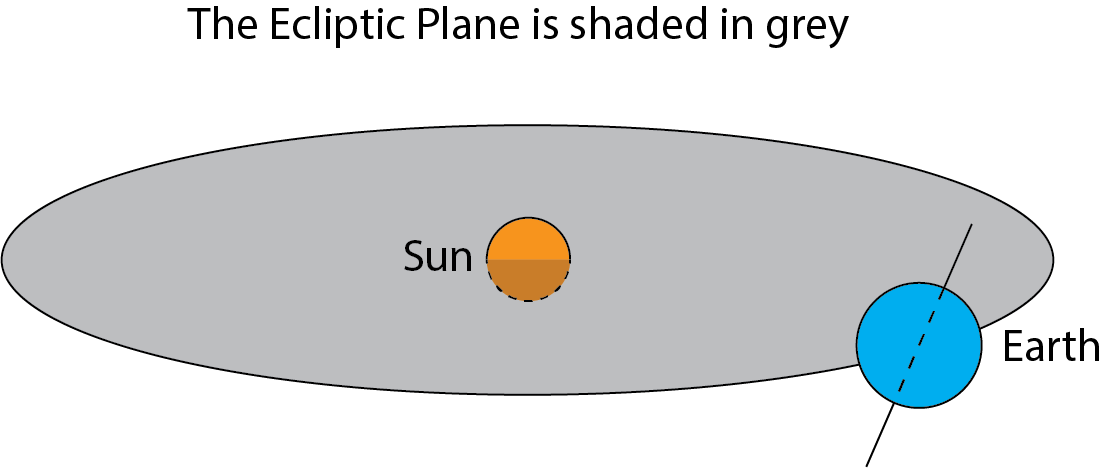
Obliquity of the ecliptic: the angle between the ecliptic and the equatorial planes. This angle is the same as the angle between the Earth’s rotation axis and a line perpendicular to the ecliptic passing through the center of the Earth. The obliquity changes over time due to a phenomenon called nutation, namely a small, long-term oscillation of the Earth’s axial tilt between approximately 22 and 24.5 degrees with a period of approximately 41,000 years. In modern times, it is approximately 23.5 degrees.
Eccentricity: in modern astronomy it describes how elliptical the orbit of a celestial body is. An eccentricity of 0 means that the orbit is perfectly circular, and an eccentricity between 0 and 1 means that the orbit is elliptical, with the orbits becoming increasingly elliptical as eccentricity approaches 1. For the ancient Greek astronomers, who did not conceive of celestial orbits as elliptical but only circular, ‘eccentricity’ was the distance of the Earth from the center of the deferent circle.
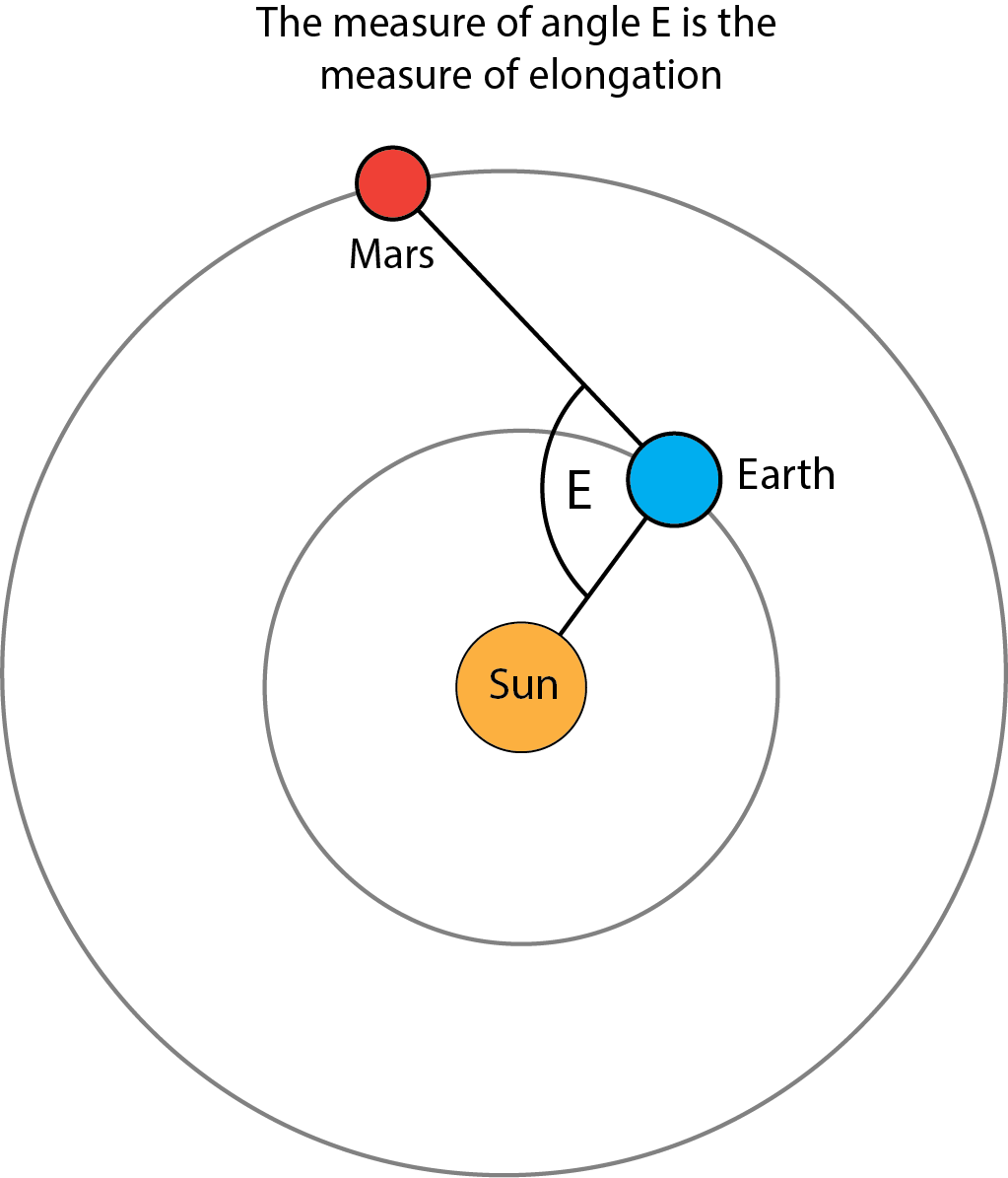
Elongation: the measure of the angle created between the Sun, Earth, and a celestial body, where the Earth is the vertex of the angle. It is measured in degrees of longitude in the Ecliptic Coordinate system.
For the inferior or inner planets (that is, planets that are closer to the Sun than the Earth), there exists a point at which the elongation becomes the largest. This point is called the point of greatest eastern or western elongation, depending on where the point is located.
Ephemeris (plural: ephemerides): ephemerides (litt. “diaries”) were tables listing the positions of the heavenly bodies at regular intervals. They were based on calculations and were used by astrologers. They were first compiled by the Babylonian astronomers and became very popular among the Greeks. Ephemerides remained important in astronomy until our times.
Equinox: the point at which the Sun crosses the celestial equator on the celestial sphere. This point can also be seen as the crossing point between the celestial equator and the ecliptic. When the Sun crosses the equator from South to North, we have the vernal (spring) equinox, whereas the point at which the Sun crosses the celestial equator from North to South is the autumnal equinox. The equinoxes are days in which there are equal amounts of sunlight and darkness. At the equinox, the Sun will rise and set due east and west (assuming a flat horizon).
Solstice: the point at which the Sun is at its greatest declination (+/- 23.5°) away from the celestial equator. When the Sun reaches +23.5 it touches the Tropic of Cancer (or Summer Tropic) and we have the summer solstice, whereas when it reaches -23.5 it touches the Tropic of Capricorn (or Winter Tropic) and we have the winter solstice. During the summer solstice, there is the most daylight, while the winter solstice has the least amount of daylight.
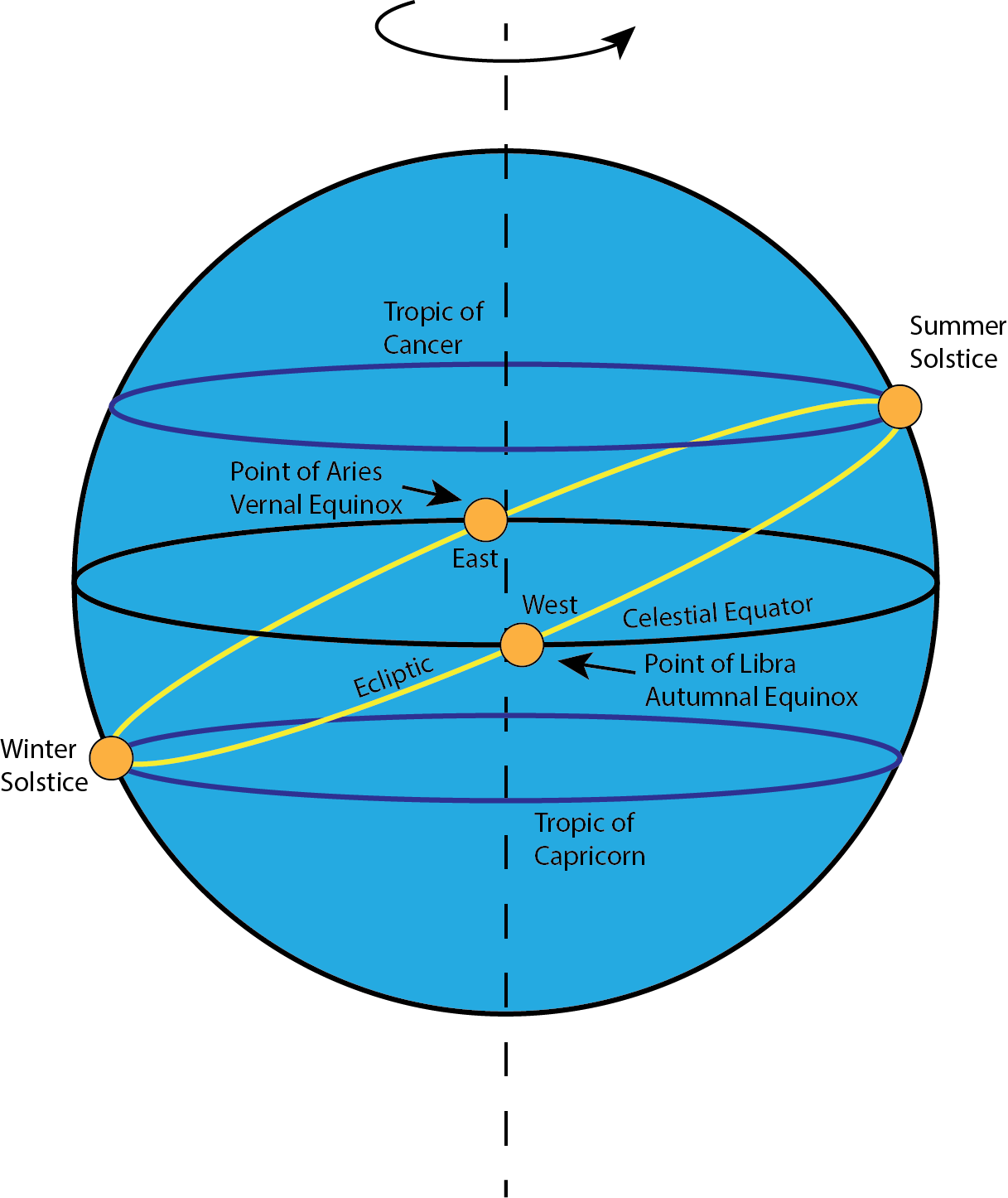
Horoscope: a list of the celestial coordinates of the Sun, Moon, and planets, especially relative to the zodiac circle at a specific moment in time.
Genethlialogy: the supposed science of predicting one’s life based on the horoscope at the time of their birth date. This is similar to the current method of using one’s birth astrological sign to predict personal characteristics or personalities.
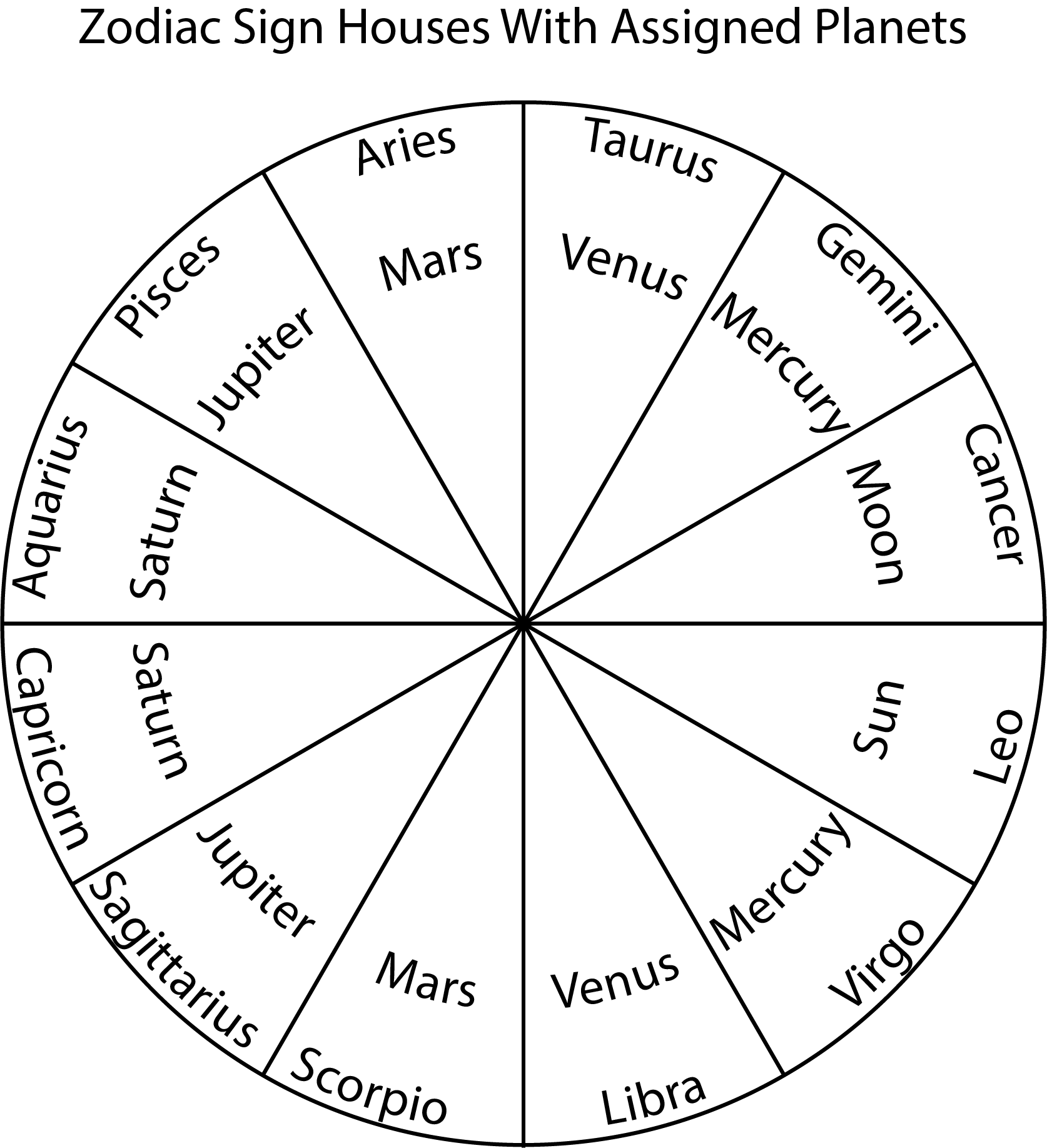
House (astrology): in astrology each planet had a house. The problem is that there are twelve zodiac signs and only five planets–or seven, if one counts the Moon and the Sun, which for the Greeks were also “planets”, i.e., “wandering stars”. The solution was the following: the zodiac circle was split into two halves, one from Leo to Capricorn and the other from Cancer to Aquarius. The Sun was assigned to Leo and the Moon to Cancer. The remaining ten signs were assigned to the remaining five planets according to their distance from the Earth (Mercury, Venus, Mars, Jupiter, and Saturn) (see diagram). For example, in the half from Leo to Capricorn, Leo is the Sun, and the next sign, Virgo, is assigned to Mercury (the nearest planet). After that comes Libra, which is assigned to Venus (the second nearest), and so forth. Thus each planet, except for the Sun and Moon, is assigned to two houses.
ʿIlm al-hayʾah (علم الهيئة): one of several Arabic terms for astronomy, literally “the science of the configuration” [of the universe] concerned with the geometrical structure of the universe, the motion of the celestial bodies, determining the positions of the heavenly bodies, and devising and deploying instruments and techniques to ensure accurate observations. From the Egyptian encyclopedist Ibn al-Akfānī (d. 1348) “‘It is the science from which one learns the situations of the lower and upper simple bodies, their forms, their positions, their magnitudes, the distances between them, the motions of the orbs and the planets and their amounts. Its subject is the aforementioned bodies from the point of view of their quantities, positions, and inherent motions’ (J. J. Witkam, De Egyptische arts Ibn al-Akfānī, Leiden 1989, 408)” (quoted in Ragep, “Astronomy,” EI Three).
Fixed stars: celestial bodies which, seen from the Earth, do not change their position relative to each other. These include all stars except the Sun. In reality, fixed stars move relative to one-another, a phenomenon called “proper motion”, but this motion is very small and usually only measurable over several centuries.
Goal year texts: these texts (attested from 236 BCE on) were divided into sections, one for each planet. In them, different phenomena were listed (synodic phenomena, passages through the so called Normal-Stars, lunar and solar eclipses) taken from the Astronomical Diaries. This data was then used to predict future astronomical phenomena for a given year.
Madrasah (مدرسة): traditional Islamic educational institution.
Majmūʻah (مجموعة): anthology or collection of texts appearing in a single volume.
Marṣad (مرصد) or raṣadkhānah (رصدخانه): “a place where one keeps watch or makes observations” i.e., an observatory, both a site for making astronomical observations and an institution supporting such activity. The observatory at Marāghah founded in 1259 by Naṣīr al-Dīn Ṭūsī under the patronage of Hülegü Khān (d.1265) was elaborately organized with numerous buildings, a rich library, large-scale instruments, and funding from the revenues of pious foundations. The famous observatory at Samarqand established under the direction and patronage of the Timurid ruler Ulugh Beg (d. 1449) engaged several scholars for its observational program and featured massive instruments which permitted the preparation of a new star catalogue based on independent (and remarkably accurate) measurements.
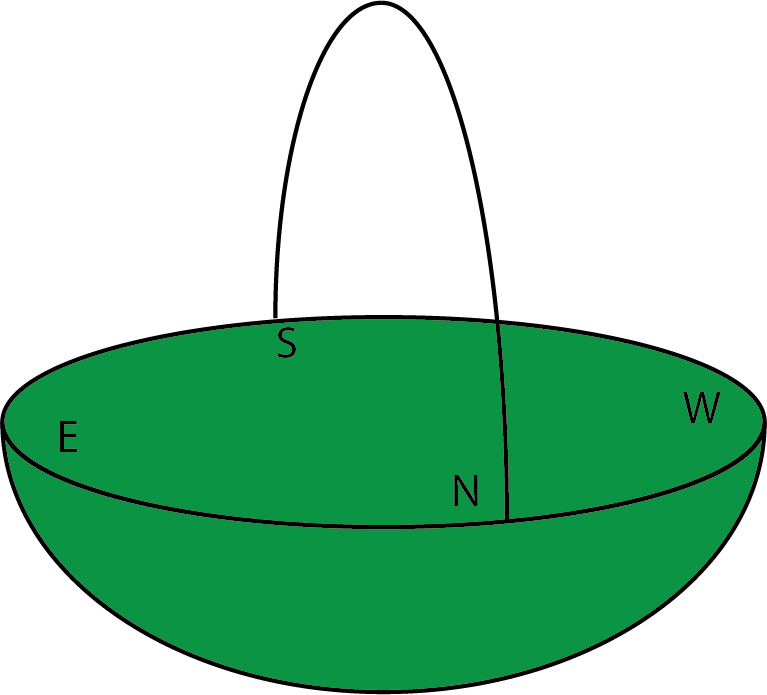
Meridian (celestial): the circle on the celestial sphere passing through the celestial poles and the observer's zenith, and therefore, by definition, the nadir as well. The meridian crosses the observer’s horizon due north and south. Stars will transit an observer’s meridian once per day.
Moon phases: the moon orbits around the Earth and half of its surface is constantly illuminated by the Sun. However, depending on the position of the Moon in relation to the Earth and the Sun, the portion of the illuminated surface of the Moon visible from the Earth changes with time, creating a series of phases that occur within a period of around 29 to 30 days (synodic or lunar month). When the Moon and the Sun are in conjunction with respect to the Earth, the illuminated half of the Moon is invisible (New Moon); when the Moon and the Sun are in opposition with respect to the Earth, the entire illuminated half is visible (Full Moon). The phases of the moon occur in the following order within a synodic month:
New Moon → Waxing Crescent → First Quarter → Waxing Gibbous → Full Moon → Waning Gibbous → Third Quarter → Waning Crescent → New Moon
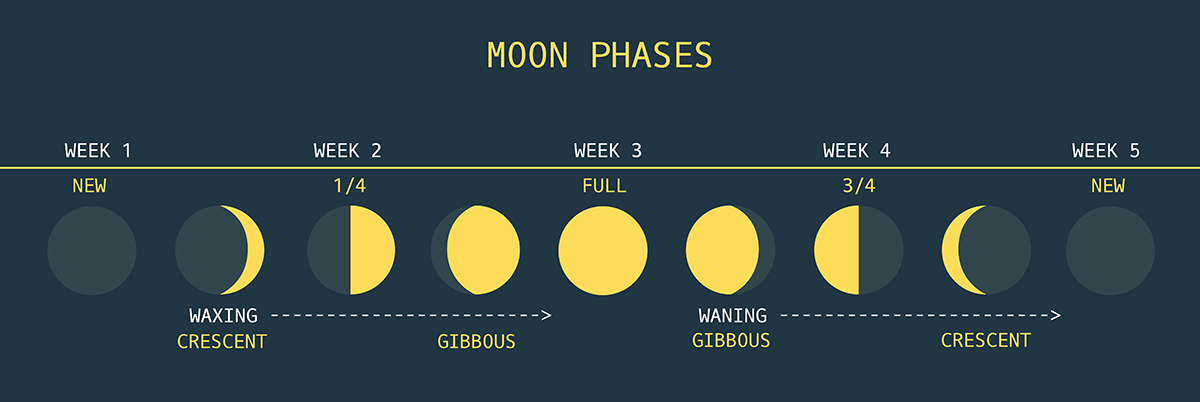
Muwaqqit (موقّت): timekeeper.
Nadir: the point on the celestial sphere opposite of the zenith; it is located directly beneath the observer (it is not visible to the observer).
Zenith: the point in the celestial sphere directly above the observer, opposite the nadir.
Node: the point at which the path of a celestial body on the celestial sphere crosses the ecliptic. It is an ascending node when the body crosses the ecliptic from south to north and descending when the body crosses from north to south.
Normal stars: Babylonian standard reference stars. They are ca. 30 stars near the ecliptic used to define the position of planets; in the Astronomical Diaries the Babylonian astronomers recorded the passages of planets and the Moon near one of these Normal stars. These stars are also associated with the zodiac signs.
Occultation: an occultation occurs when a celestial body passes in front of another whose apparent size is smaller, so that the occulted body is entirely hidden by the occulting body (unlike a transit, where the occulting body is smaller). For example, the Moon occults all the stars in its path because of its larger size as seen from the Earth.

Parallax: the apparent change in location of an object on the celestial sphere relative to a fixed point due to the change in the location of the observer.
Planet: a celestial body that has all of the following characteristics:
- It has cleared the neighborhood around its orbit, eliminating other celestial bodies such as asteroids.
- It is massive enough, or has enough mass, to have spherical shape.
- It is not massive enough to ignite thermonuclear reactions at its core.
- It orbits the Sun.
The celestial bodies that are currently considered planets are: Mercury, Venus, Earth, Mars, Jupiter, Saturn, Uranus, and Neptune.
The Greeks, who could only see the first five planets with the naked eye, defined planets through their motions in the sky and called them “wandering stars” in opposition to the “fixed stars”. Therefore, they also considered the Sun and the Moon to be “wandering stars”.
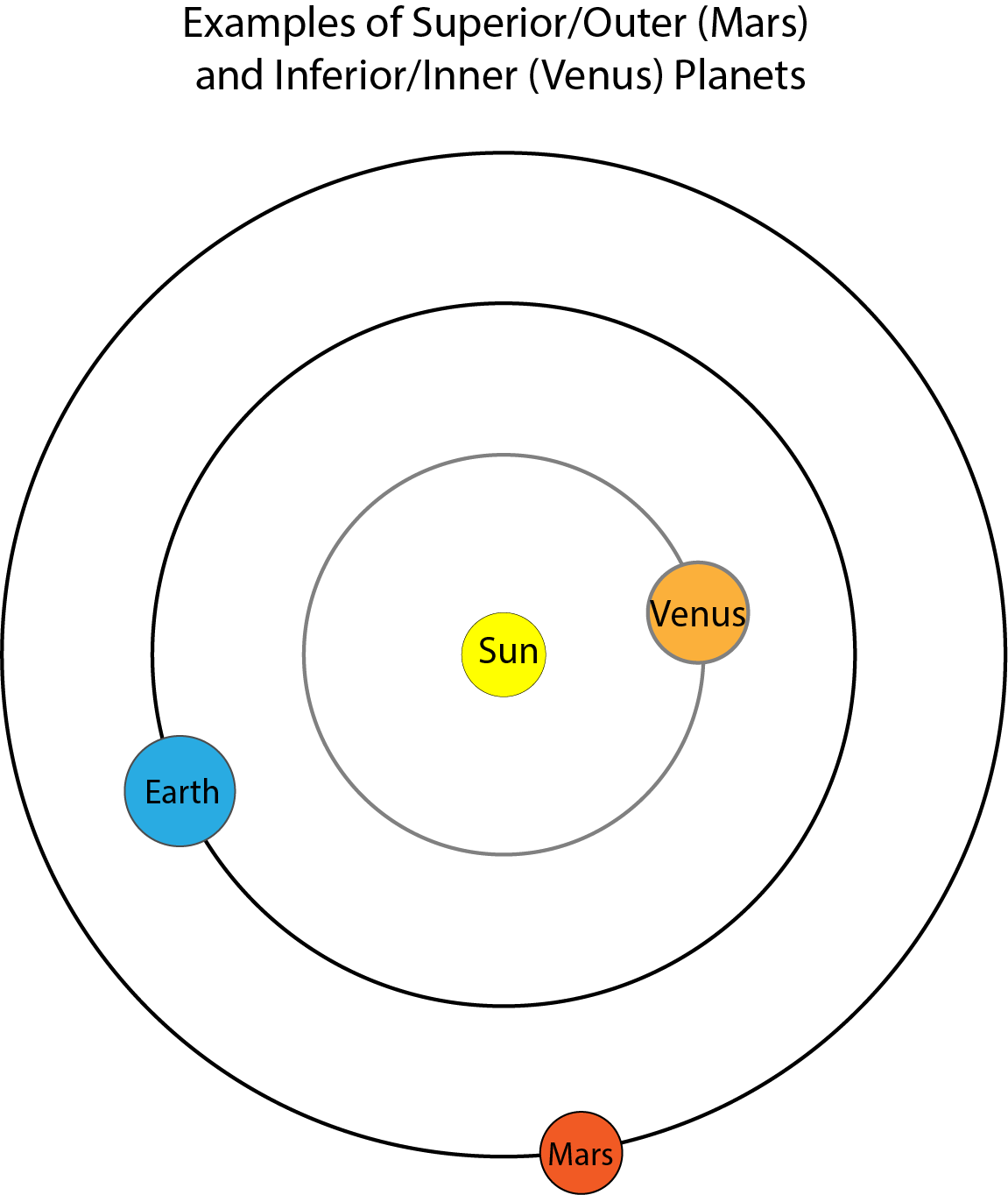
Inferior (or inner) planets: planets whose orbit is closer to the Sun than the Earth’s orbit. They are Venus and Mercury.
Superior (or outer) planets: planets whose orbit is farther from the Sun than the Earth’s orbit. They are Mars, Jupiter, and Saturn.
Planetary motion models:
Deferent: a circle on which the center of epicycle orbits. The center of the deferent can be located at the Earth (in the concentric models) or outside the Earth (in the eccentric models).
Epicycle: a circle whose center is located on the circumference of the deferent. In models of planetary motion that use epicycles, planets orbit on the epicycle as the epicycle moves along the deferent.
Equant: a third point introduced by Ptolemy to the Eccentric-deferent-and-epicycle model; the latter had the center of the deferent (called ‘eccentric’) located outside the Earth. The equant is a point diametrically opposite to the Earth in relation to the center of the deferent. The planet on the epicycle moves at a constant angular speed in relation to the equant. This point was invented by Ptolemy, but the name ‘equant’ was introduced later.

Eccentric-circle model (or Eccenter model): in this model, the planet orbits around the deferent which is not concentric with the Earth. This model was elaborated in the late third century BCE.
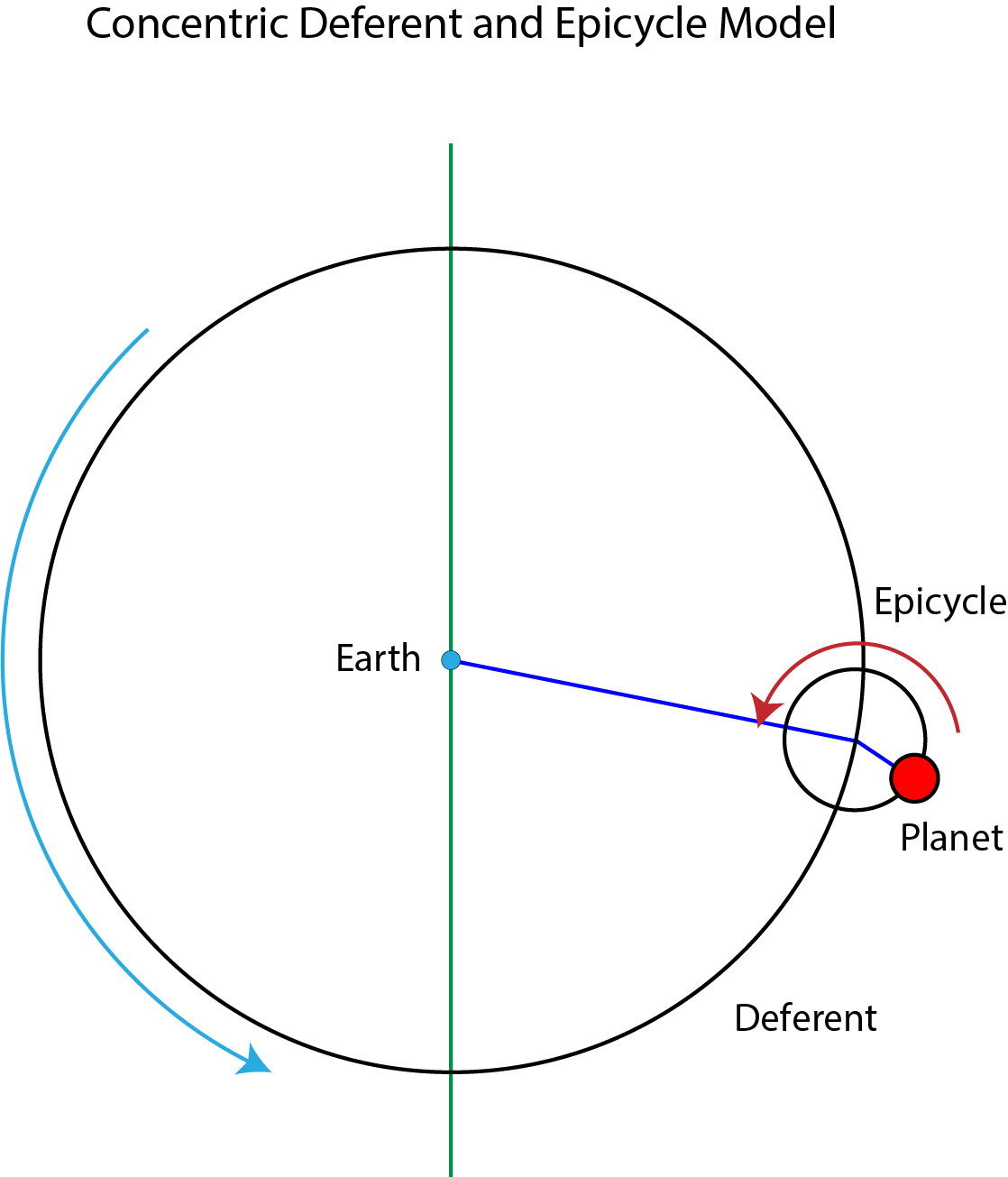
Concentric-deferent-and-epicycle model (also known as: Deferent-and-epicycle model or Concentric-and-epicycle model): in this model the epicycle revolves around a deferent circle centered on the Earth; the planet orbits on the epicycle whose center lies on the circumference of the deferent. This model was elaborated in the late third century BCE.
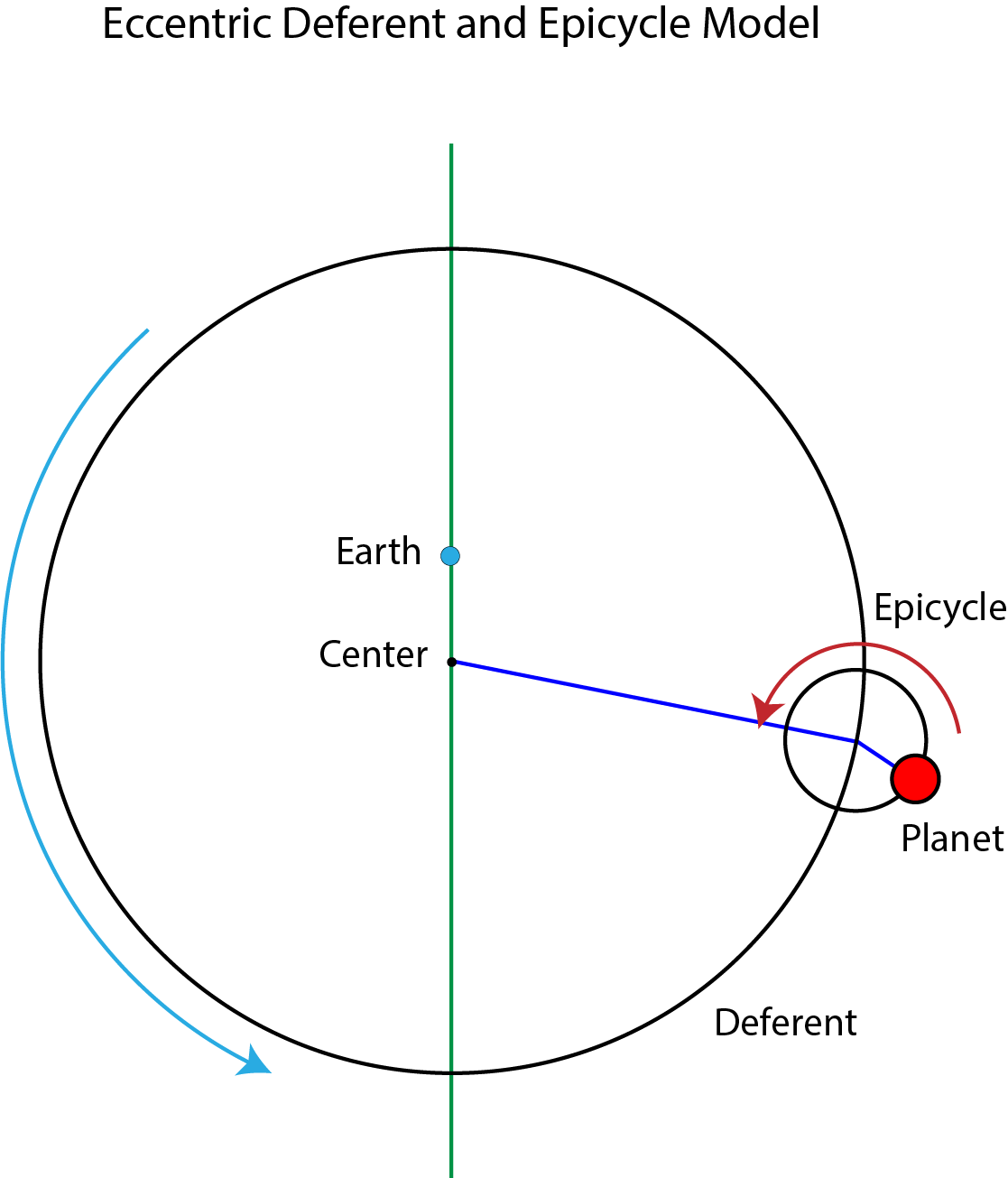
Eccentric-deferent-and-epicycle model (also known as Eccentric-and-epicycle model or Intermediate model): in this model the epicycle revolves around a deferent circle which is not concentric with the Earth. This model was elaborated in the period between Hipparchus (ca. 150 BCE) and Ptolemy (ca. 100-170 CE).
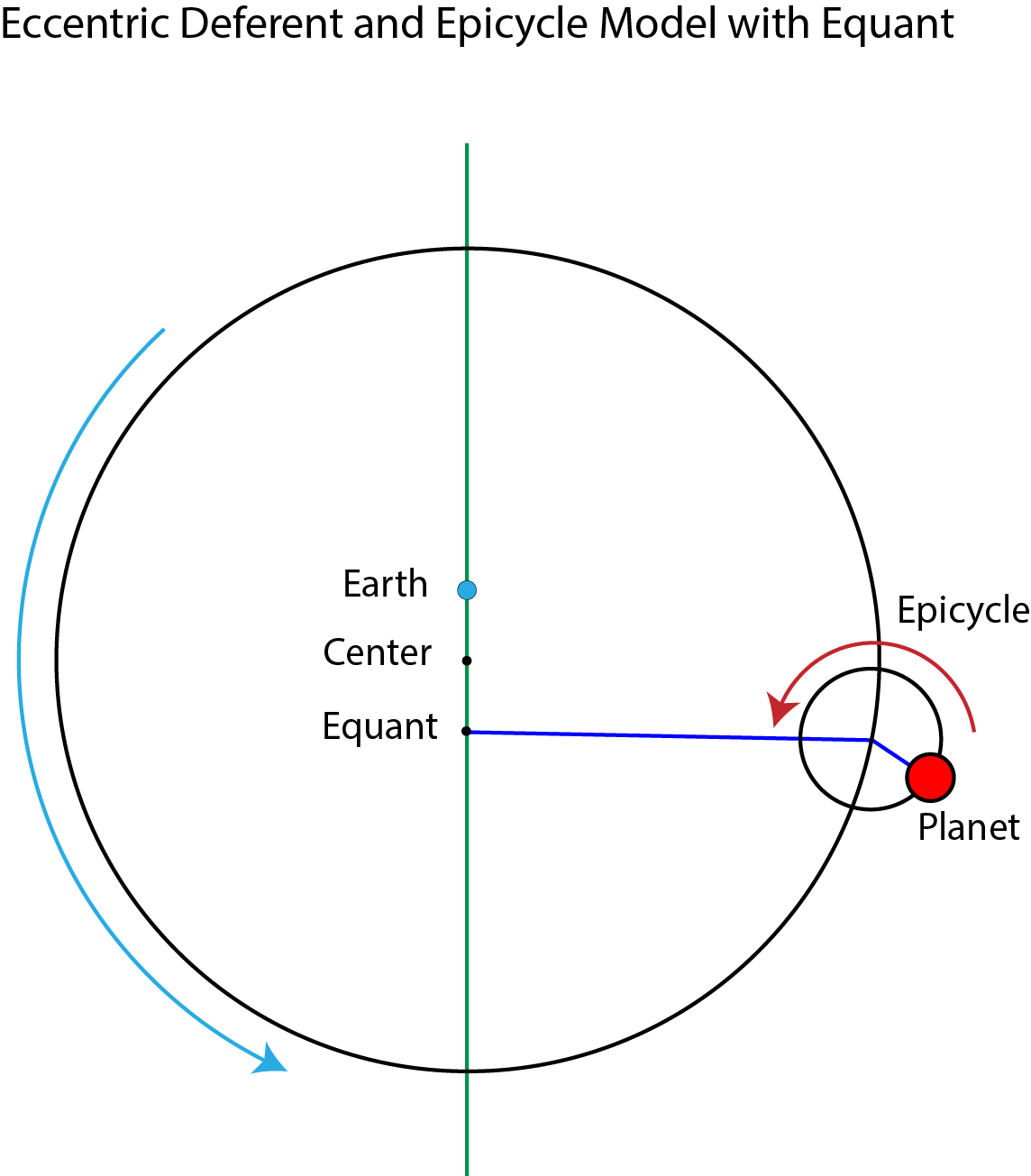
Eccentric-and-epicycle model with equant: this model was invented by Ptolemy and consists of a combination of the eccentric-circle model and the concentric and epicycle models. In this model there are three points: the center of the deferent (called ‘eccentric’), the Earth, and the so-called ‘equant’, which is diametrically opposite to the Earth in relation to the center of the deferent. The planet on the epicycle moves at a constant angular speed in relation to the equant. This model, which could account for both the first anomaly (changing speed) and the second anomaly (retrograde motion), provided a very accurate mathematical model for planetary motions.
Precession of the equinoxes: the direction of the axis of rotation of the Earth is not constant but rotates around an axis perpendicular to the ecliptic with a period of around 24,000 years. This motion causes the celestial equator to rotate relative to the ecliptic circle as well, so that the position of the intersection of these two circles, which defines the two equinoxes, changes in time relative to the fixed stars. This causes the spring equinox (which serves as reference point in both the equatorial and ecliptic reference systems) to move westwards in relation to the fixed stars at a rate of around 1° every 72 years. As a result, the equinoxes move 1° west every 72 years.
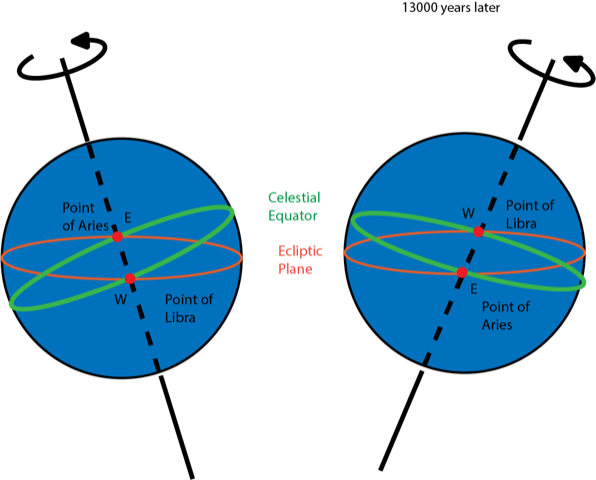
Quadrant (ربع): a kind of astronomical instrument with a graduated quarter of a circle. In its large, stationary form (mural quadrant, widely used by Muslim astronomers), the quadrant could be used to measure meridian altitudes of sun and stars which could then be used to enhance values of local latitude, determine new values of the obliquity of the ecliptic and check stellar coordinates. Muslim astronomers also devised several smaller, portable types (namely hoary quadrant, sine quadrant, universal hoary quadrant) which could be used for timekeeping.
Retrogradation (or Retrograde motion): the apparent change of motion of a planet of the solar system relative to the fixed stars as seen from the Earth, in which the planet stops moving from west to east and starts moving from east to west. This phenomenon is due to the combination of the orbital motions of the Earth and of the planet. All planets exhibit some degree of retrograde motion.

Station (or Stationary point): the points where the retrograde motion of a planet starts and ends. At a station, the planet seems to stop moving and then start moving again in the opposite direction.
Seasonal hour: before the use of a standardized unit of time (the equinoctial hour), in Greece time was measured in two twelve-hour periods, one for the night and one of day. Every day, the time interval when there was sunlight was divided by twelve, and the nighttime was also divided by twelve. This resulted in seasonal hours with different length depending on whether the measured time was during night or the day, and on the seasons. For example, a seasonal hour of daylight during the summer solstice was longer than a seasonal hour of nighttime during the same day or a seasonal hour of daytime during the winter solstice.
Equinoctial hour: it is the length of a seasonal hour during one of the equinoxes. Since there is an equal amount of daylight and sunlight during the equinoxes, a seasonal hour during an equinox has a constant duration for the entire 24-hour cycle. The first occurrence of equinoctial hours in Greek astronomy is in P.Hibeh 27 (ca. 300 BCE). Equinoctial hours were used by professional astronomers like Hipparchus and Ptolemy as they were uniform measures of units useful for calculation; yet in daily life people used seasonal hours.
Sextant (سدس): a kind of astronomical instrument similar to the quadrant but of smaller arc (one sixth of a circle or 60 degrees) also used in stationary (mural sextant) and portable form.
Sidereal: a time frame utilizing fixed stars as a point of reference to calculate intervals of time.
- Sidereal day: the time it takes for the Earth to rotate to the point where a star crosses the south meridian two consecutive times. Due to the orbit of the Earth around the Sun, resulting in the Sun moving along the ecliptic during one day, the sidereal day is slightly shorter than a solar day.
- Sidereal lunar month: the time it takes for the Moon to return to the point in its orbit where it occults a fixed star on the celestial sphere.
- Sidereal year: the time it takes for the Sun to return to the same fixed star on the celestial sphere.
Star phases: star phases are the risings and settings of stars that occur close to sunrise or sunset, that is, when they are first visible after periods of invisibility or when they are last visible before becoming invisible to us. Star phases were very important for agricultural calendars. There are four phases:
- Heliacal rising (“morning first”) or Visible morning rising (VMR): when a star is seen rising for the first time in the morning just before sunrise, so that the star is briefly visible in the morning twilight before being lost to the light of the sun.
- Acronychal rising or Visible evening rising (VER): when a star is seen rising for the last time in the evening just after sunset and will be visible more or less all night long.
- Heliacal setting (“evening last”) or Visible evening setting (VES): when a star is seen setting for the last time in the evening just after sunset, so that the star is briefly visible in the evening twilight before it sets.
- Cosmical setting or Visible morning setting (VMS): when a star is seen setting for the first time in the morning just before sunrise, after haven been visible more or less all night long so that the star is briefly visible in the morning twilight.
Synodic period: the time it takes between two successive conjunctions of a celestial body with the Sun as seen from Earth. For the Moon, the synodic period is the time between two consecutive New Moons or Full Moons, which is around 29.5 days and is called the lunar month.
Synodic phenomena: they are connected with the planets’ elongation from the Sun and are different for inferior and superior planets.
The synodic phenomena for an inferior (or inner) planet are: its first appearance in the evening or “evening first”; its evening station; its last appearance in the evening or “evening last” (which occurs close to the planet’s inferior conjunction with the Sun); its first morning appearance or “morning first”; its morning station; its last morning appearance or “morning last” (which occurs close to the planet’s inferior conjunction with the Sun).
The synodic phenomena for a superior (or outer) planet are: its first appearance in the morning or “morning first”; its first station; its first appearance in the evening (achronycal rising) or “evening first” (which occurs close to the planet’s opposition with the Sun); its second station; and its last evening appearance or “evening last” (which occurs close to the planet’s conjunction with the Sun).
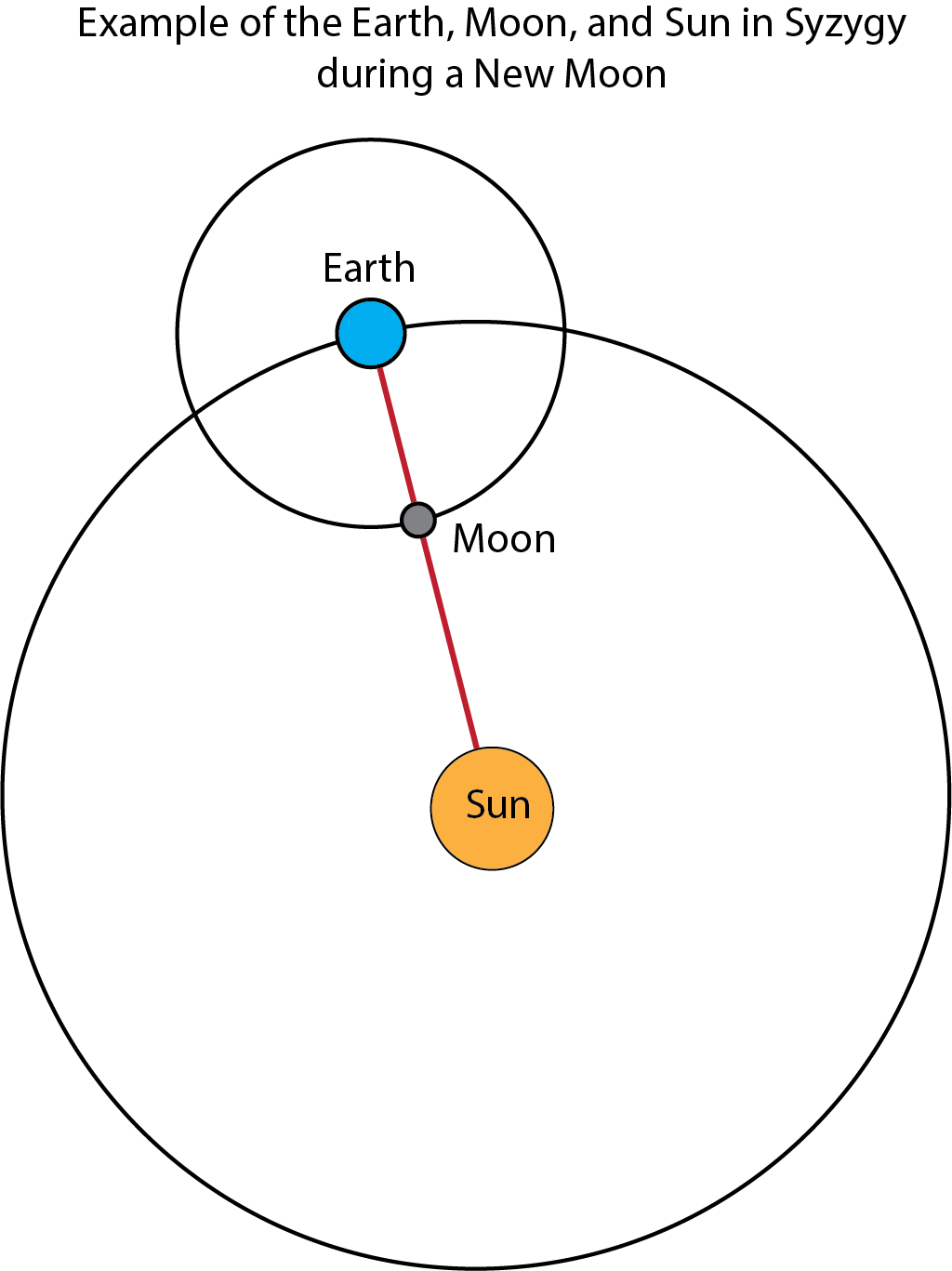
Syzygy: the moment at which three or more celestial bodies are positioned in a relatively straight line in space. From the surface of any of these bodies, the other two will be in either conjunction or opposition. This happens frequently with the Earth, Sun, and Moon. A syzygy occurs every New and Full Moon, when the Moon is in conjunction or opposition to the Sun. During this event, the positions of the Earth, Sun, and Moon form a straight line.
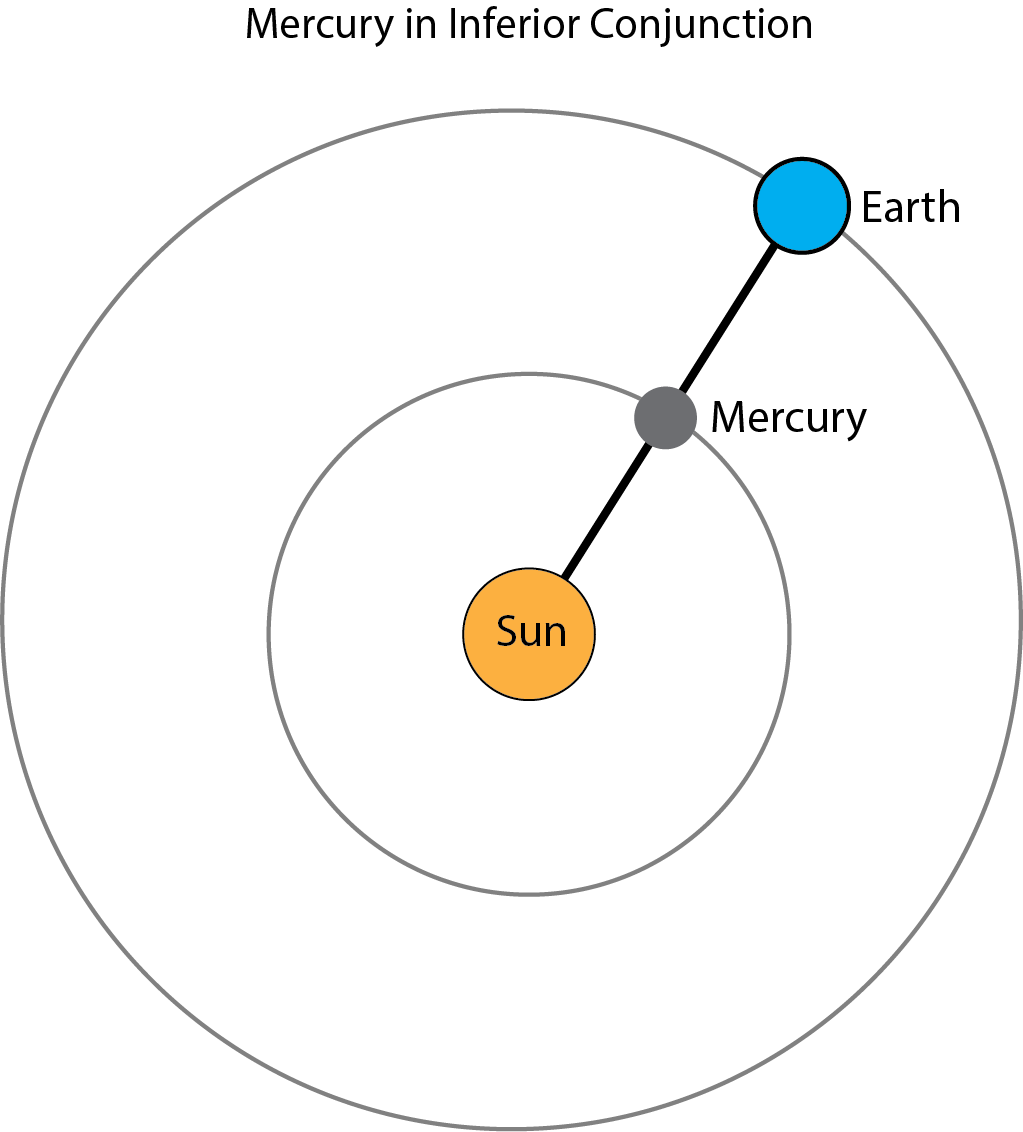
Conjunction: the point when a celestial body has the same ecliptic longitude as the Sun, in the ecliptic coordinate system. Conjunctions are inferior when the celestial body lies between the Earth and the Sun, and superior when the Sun is located between the Earth and the planet. The distinction of inferior and superior conjunction is especially for inferior (or inner) planets as seen from Earth. On the other hand, as seen from Earth, the superior (or outer planets) have only superior conjunction and the Moon only inferior conjunction.
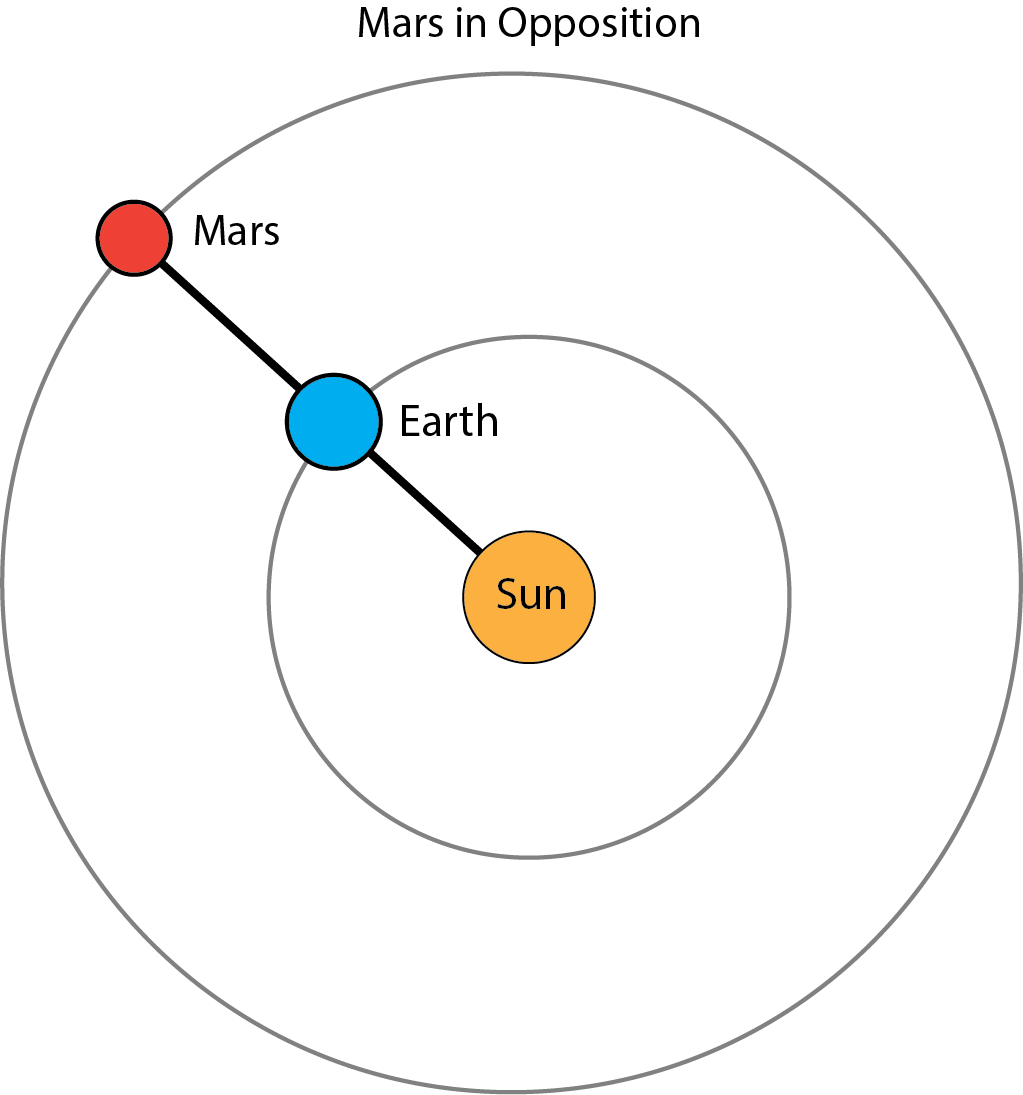
Opposition: the point when a celestial body is 180 degrees in ecliptic longitude away from the position of the Sun in the ecliptic coordinate system. Inferior (or inner) planets are never in opposition.
Transit:

- When a celestial body crosses in front of another body with a larger size. A common example is when Mercury transits the Sun by crossing the path between us (the observer) and the Sun.
- Transit can also refer to the point in time when a fixed star on the celestial sphere crosses the local meridian (also known as meridian transit or culmination of a star).
Tropical year: the time between two consecutive passages of the Sun through the vernal equinox. It is equivalent to around 365.2422 days.
Ṭūsī couple: mathematical device proposed by Naṣīr al-Dīn Ṭūsī which offers a mechanism for deriving linear motion from uniform circular motion. As proposed, the device consisted of two circles, one twice as large, the other internally tangent to it and rotating twice as fast in the opposite direction. A given point on the smaller circle would oscillate along a straight line. It was subsequently expanded to multiple versions and has been used by astronomers in place of the equant concept proposed by Ptolemy. View a selection of depictions of the Tusi couple on Wikimedia Commons.
Zīj (زيج): an astronomical handbook of sizable length with tables and texts of explanatory material, usually intended for a single locality of particular longitude and latitude. A typical zīj will cover calendars and calendar conversion, trigonometric functions, spherical astronomic functions, planetary stations and visibility, solar and lunar parallax and eclipses, lunar visibility, geographical tables, star catalogues, and tables for mathematical astrology alongside the core planetary mean motions, equations and latitudes. A zīj might be compiled as a result of a substantial observational program or produced by revising an earlier zīj to suit a different longitude or latitude. Not all zījs include lengthy theoretical discussion and there are some classes of tables which are not typically included, among them tables for sexagesimal multiplication, ephemerides, and calculation of lunar crescent visibility.
Ziqpu stars: in Babylonian astronomy, a set of 25 stars used to determine the passing of time at night by their culminations (the word ziqpu means ‘highest point’).
Zodiac band: it is the circular strip of the sky in which the Moon and the planets move. It is centered on the ecliptic (where the Sun moves) and was taken to be 12 degrees wide (+/-6° above and below the ecliptic) by Geminus. However, other widths are also attested (e.g., 16 degrees, +/-8° above and below the ecliptic).

Zodiac circle: this is how the Greeks referred to the ecliptic, that is, the path of the sun on the celestial sphere. The name comes from the Zodiac constellations that lie upon it.
Zodiac constellations: these are the physical constellations, or groups of stars, that the sun passes through over the course of the year. Generally, in Greek astronomy there are 12 zodiac constellations but the number and the constellations themselves vary according to different traditions (for examples, the Babylonians in MUL.APIN listed 17 zodiac constellations). The zodiac constellations have irregular shapes which do not line up exactly with the zodiac signs, which are precise geometrical divisions of a circle in 12 equal parts, so that the Sun may spend a longer or shorter period of time in a specific constellation than it would in a zodiac sign.
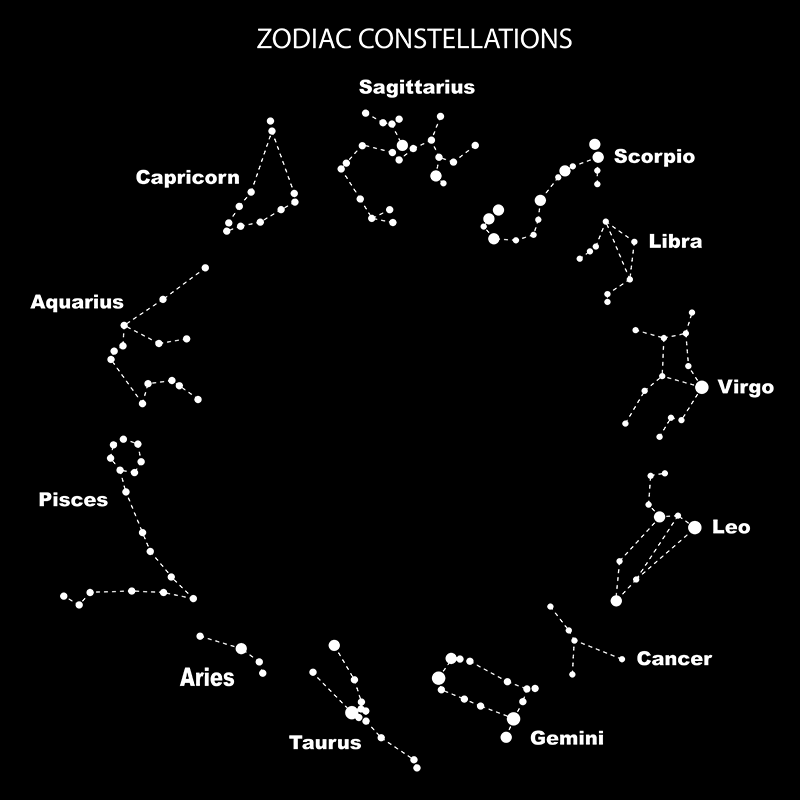
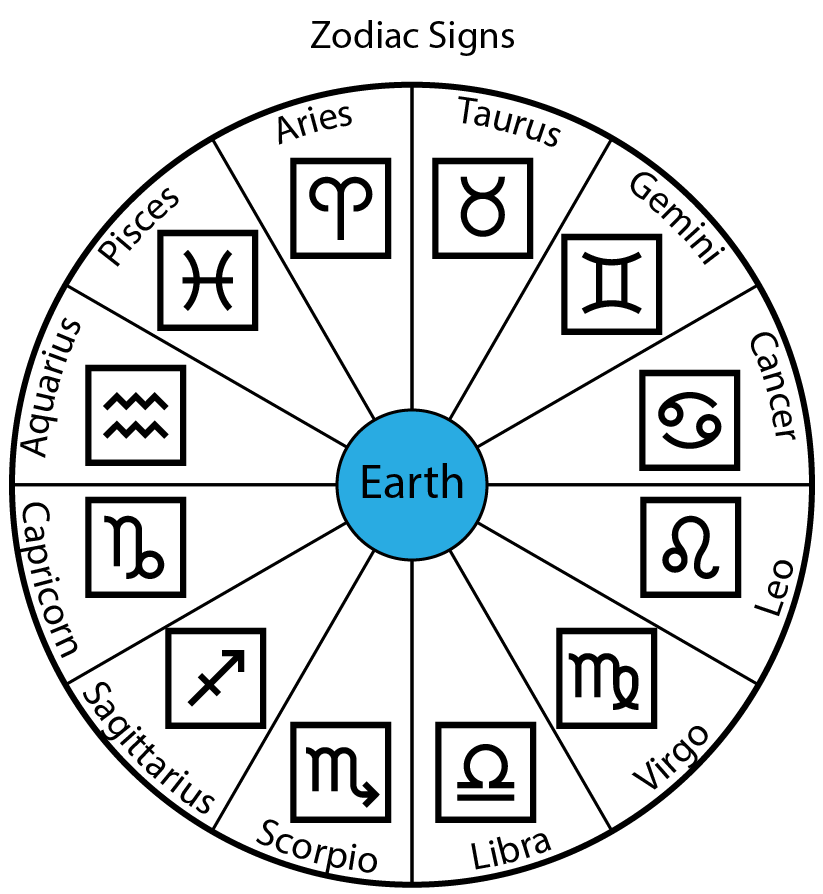
Zodiac signs: they are defined as arcs of 30 degrees each dividing the ecliptic into twelve equal parts. They were first devised by the Babylonians and were then inherited by the Greeks in the late fourth century BCE. The twelve signs are Aries, Taurus, Gemini, Cancer, Leo, Virgo, Libra, Scorpio, Sagittarius, Capricorn, Aquarius, and Pisces.